The Eighth Continent – Madagascar – Part 7: People and Culture
Ethnic demographics of Madagascar is quite diverse. Without including the colonial and post-colonial immigrants, the number of ethnic groups in Madagascar number over 20 and are divided in to two main ethnic groups as highland and lowland. One of the first things that I noticed when I landed in Madagascar was how similar they looked to the South East Asians. As I dug deeper to satisfy my curiosity on this, I was quite surprised to find that the human colonisation of Madagascar has in fact taken quite an unusual path.
Prior to the Bantu migration that happened around 1000 BCE, southern part of Africa was populated by the Xhosa and Pygmies. However, there is almost no evidence that they expanded to the nearby Madagascar as the first settlers. Perhaps the non-sea-faring nature of the early African tribes may have been a factor in crossing the 450-500km Mozambique Channel that separates mainland Africa and Madagascar.
The very first settlers in Madagascar happened to be from the other side of the Indian Ocean, from the South East Asia or Indo-Malaya. The South East Asians were adept sailors who navigated and populated the Indo-Malayan peninsula as well as the western part of the Pacific islands (as made popular by the movie KonTiki, part of the human settlements in Pacific are thought to have come from western parts of South America). During 50-500 CE, several waves of these settlers came from Indo-Malaya on out-rigger canoes to settle on the eastern parts of Madagascar and slowly spread across the island.
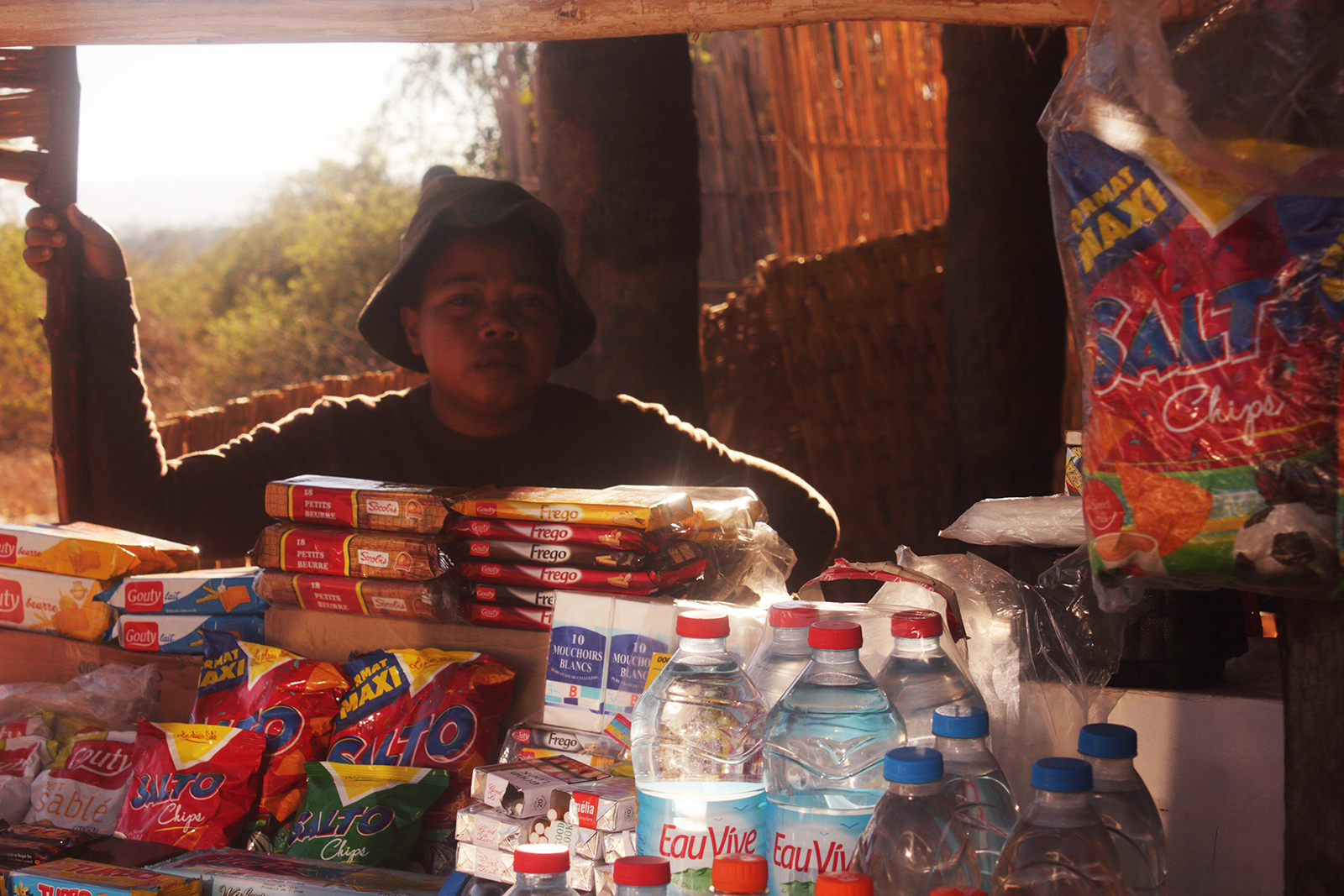
Some Malagasy bear physical features similar to the people from Indo-Malayan regions. 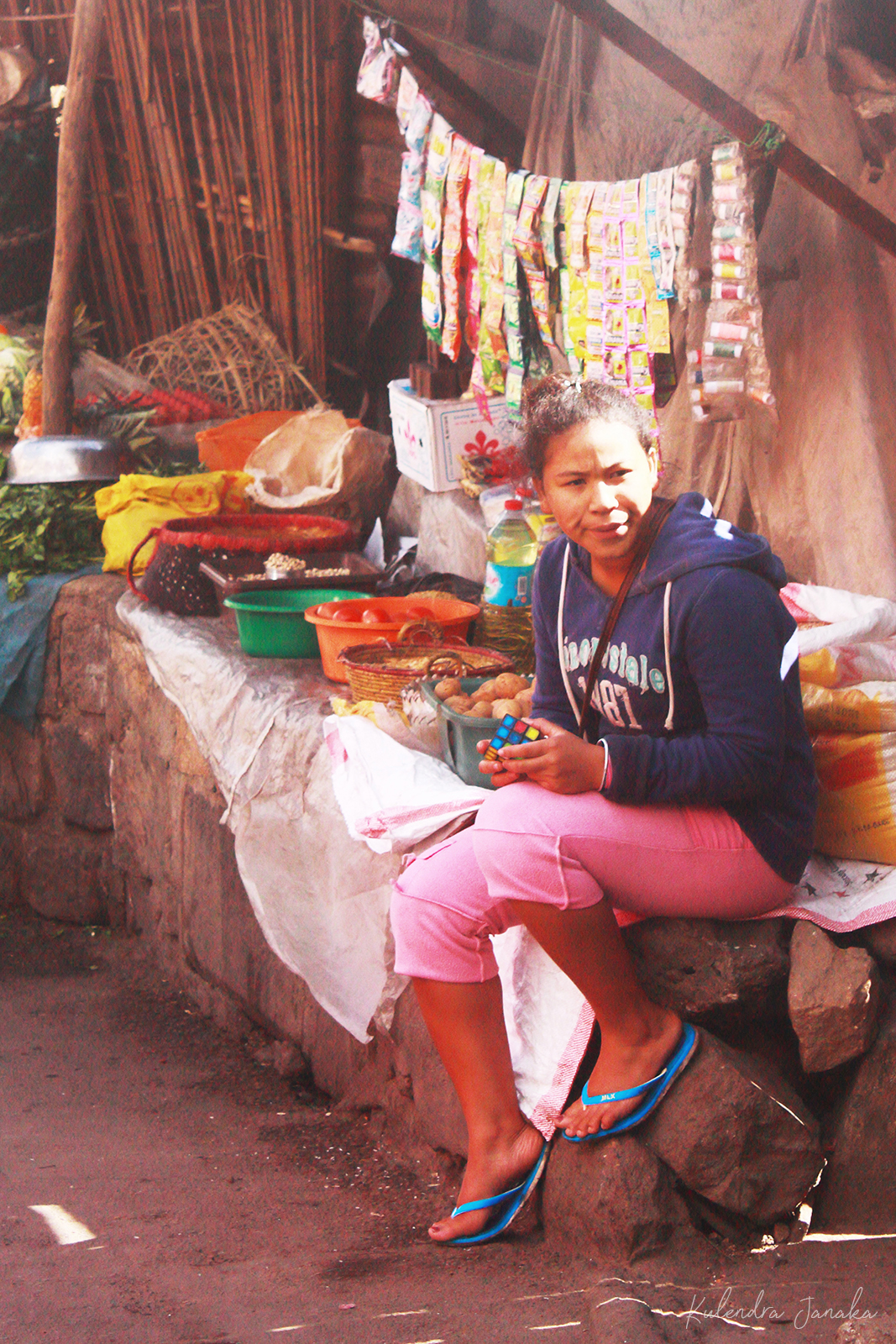
A young girl from Antananarivo. 
Yours truly, my chauffer and my guide in Kirindy and Morondava. Towards the western coast, a significant portion of the people bear resemblance to the Bantus.
During my very basic research I found that it is believed that the Bantu migrations came through to Madagascar around 500-1000 CE. The Vezo people of the south western Madagascar are thought to be predominantly descendants of the Bantu migrants. While I felt that a large portion of the population in Antananarivo have physical features similar to Indo-Malayans, a large portion of the population in Morondava, which is situated on the western coast, seemed to be having features similar to the Bantus.
The Arabs were the next to settle in Madagascar. Through700CE onwards, Arab traders who were trading ivory and slaves along the eastern coast of Africa had several settlements and ports on the western coast of Madagascar from north to south. While the number of Arabian settlers might have been very low compared to the Austronesians and the Bantus, the Arabic influence on the Malagasy culture is huge. It is possible that some of the Bantus who came to Madagascar were brought over by the Arabic slave traders.
During the period of western colonisation, both the British and the French tried to colonise Madagascar. During early 1800s, the British managed to win the favour of the king Andrianampoinimerina, the first king who united all of Madagascar. However the intention of the British seems to have been to weaken the French influence in the Indian Ocean and eventually weaken the hold they had in the Reunion islands rather than to colonise Madagascar itself. By 1897 however, the French had managed to oust the British and completely eliminate the Malagasy monarchy and thus bringing the entire island under French rule.
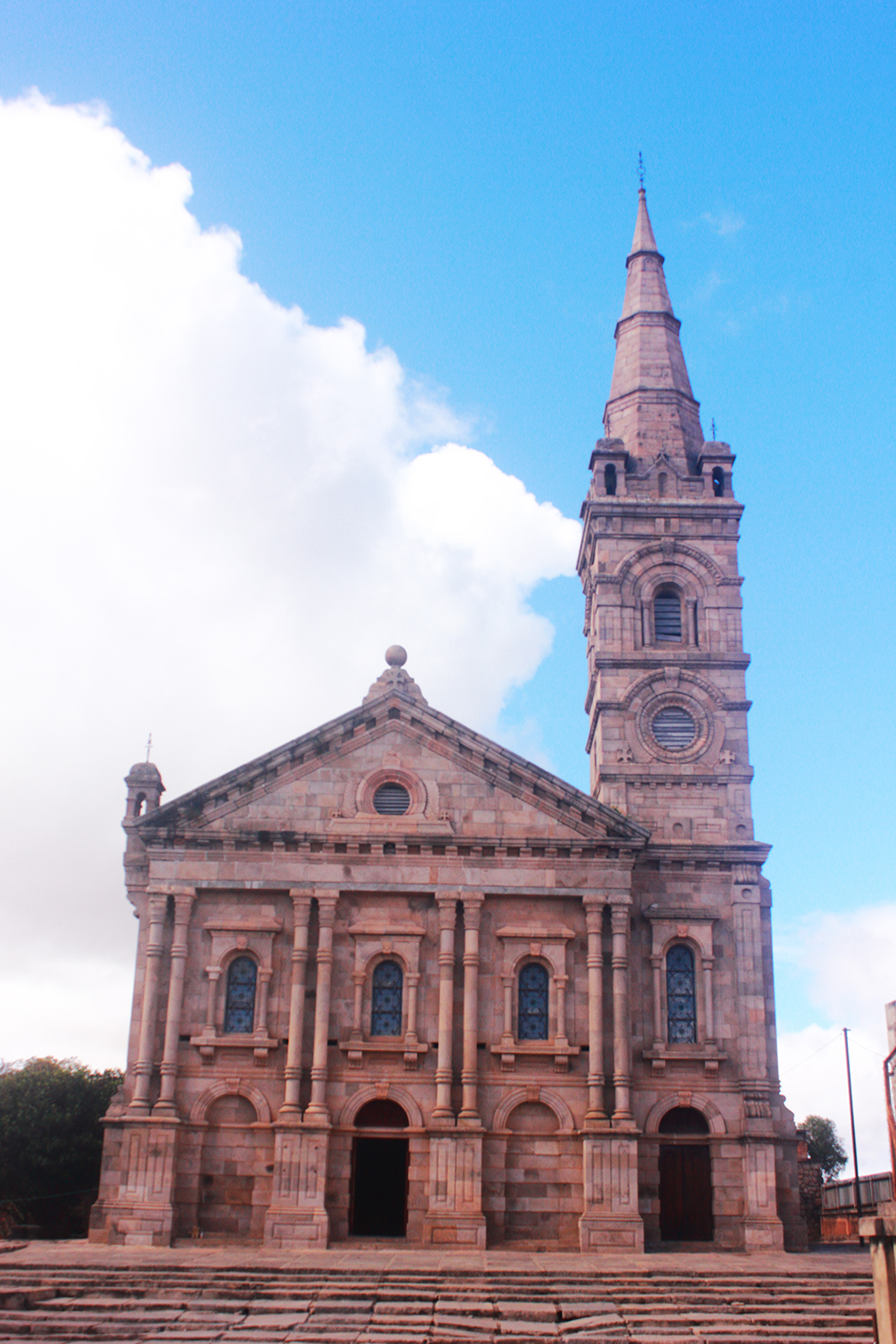
A Christian chapel was built during the reign of Ranavalona II, the first queen to convert in to Protestant Christianism 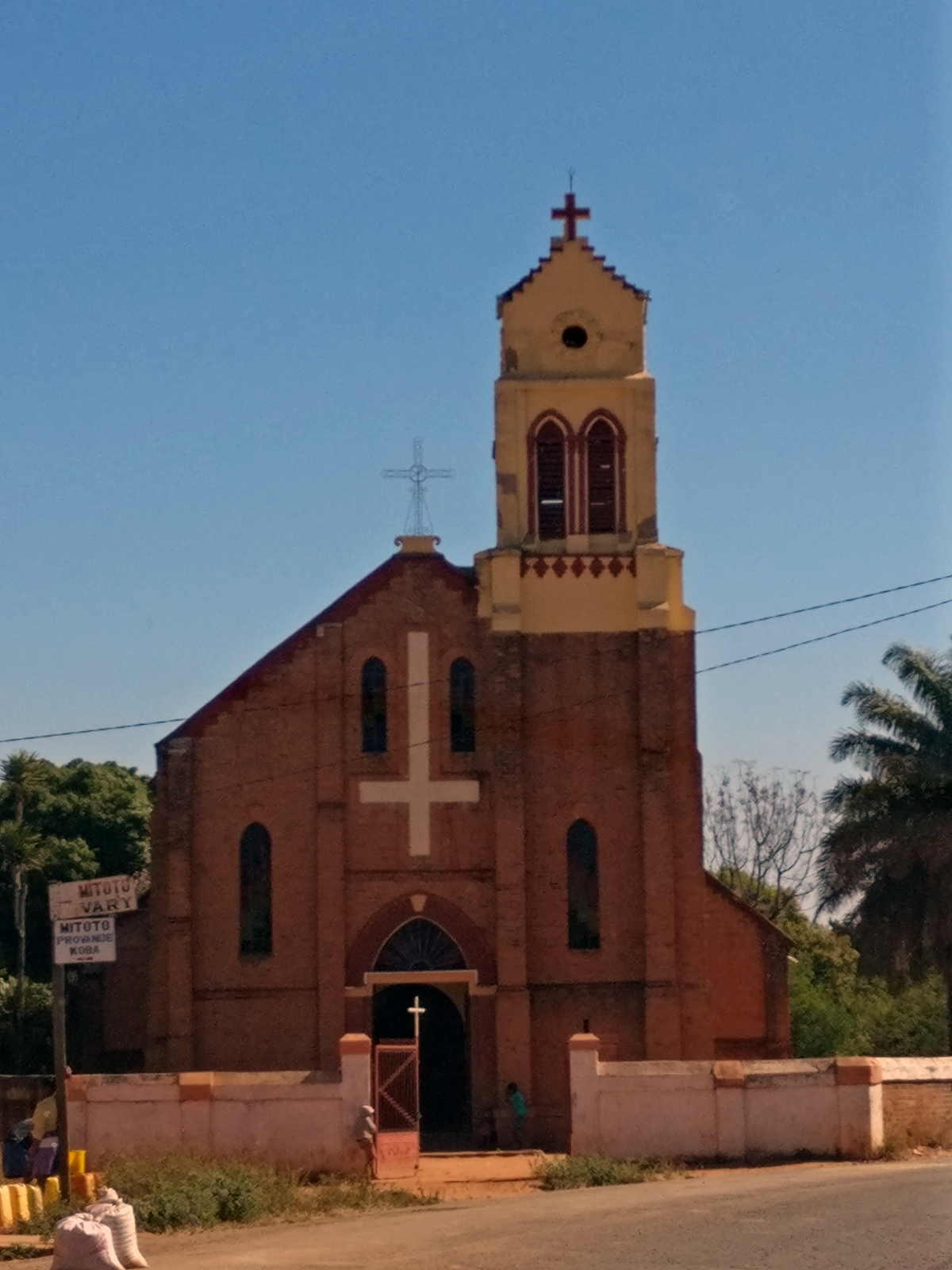
All the way to Morondava, churches were a prominent feature.
At present, majority of Malagasy, over 85% follow some form of Christianity with about 45% of them being Protestants and about 39% being Roman Catholic. Mass adoption of Catholicism may have begun around 1869 when Queen Ranavalona II converted to Christianity. Prior to the introduction of Christianity, Animism and forms of ancestor veneration seems to have been the predominant religious beliefs. Beliefs on ancestor veneration are integrated in to modern day Christianity as well.
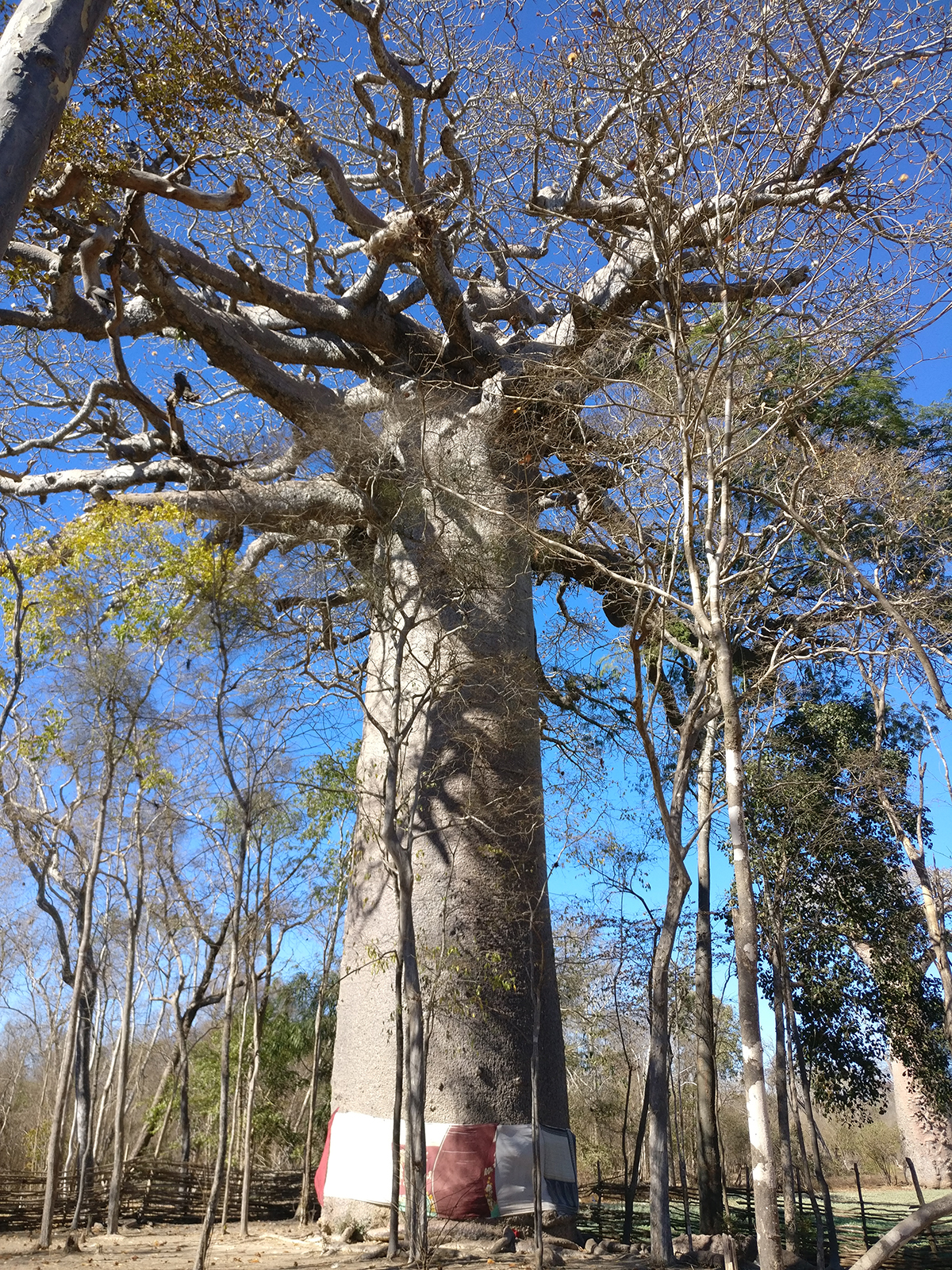
A sacred Baobab tree. The Malagasy still stick to some of their original religious beliefs which venerated nature and ancestors.
As I travelled from Antananarivo to Morondava, from central hills to the western coast, I could see certain cultural changes taking place between the regions. While churches were a common sight in pretty much every town on the way, towards Morondava, I could see mosques gaining prominence. However I later found out that Islam is still followed by only a very small minority in Madagascar amounting to only about 3% of the population. One of the first things that I noticed as a difference was the Arabic influence on the language. While in the central hills, you are likely to greet someone saying “Ahoana!” in Morondava, everyone greets with a “Salama!, an adaptation of the Arabic greeting “Salam!”.
The Arabic are thought to have had a heavy influence on the Malagasy although they did not set up any large settlements in the island. They are thought to have introduced circumcision to the Malagasy which continues to the date regardless of a massive majority of the Malagasy being Christians. Some believe that the patriarchal society of the Malagasy may also have roots in the Arabic culture noting that several of the Austronesian societies which the Malagasy are related to, are matrilineal or matriarchal. The days of the week in Malagasy are derived from Arabic (Saturday – Arabic: As Sabt – Malagasy: Sabotsy, Sunday – Al’ahad – Alahady, Monday – Al ith nayn – Altsinainy etc.) as well.
If you are visiting Madagascar, one of the main things you need to keep in mind are the various types of fady or taboos. Some of these taboos are specific to a region or tribe while some of them span across the island. Some of the taboos regarding native wildlife may have acted as a shield against possible extinction. For example the taboos regarding the Indri are very strong across all of the regions it is present in, and forbids anyone to hunt or eat them. Some other taboos, for example with regards to the Aye-Aye, actively encourage killing the animal as it would otherwise bring bad luck to the society. Some of the taboos are more relevant in day-to-day life, such as not pointing at graves, not visiting graves or cemetery sites, not bringing certain food items such as pork or lemur meat to certain areas/sites. One of the more concerning taboos that I came across was a taboo on twins. In certain tribes, a twin birth was considered to be extremely bad luck for the tribe and the children were either abandoned in the forest or were killed. The abandonment is apparently still practised to the day.
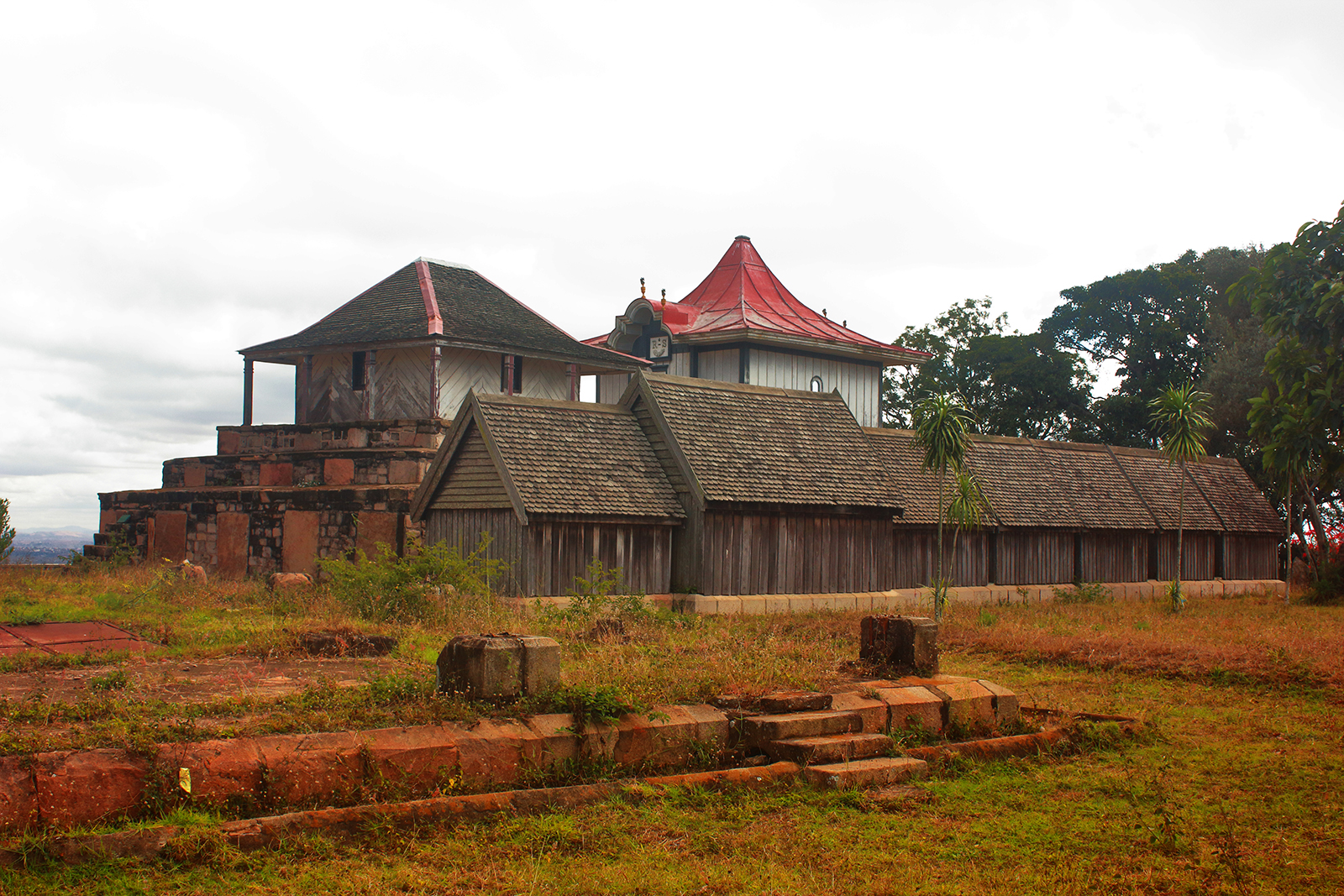
The wodden structures of the tomb complex of the royal family of Merina. 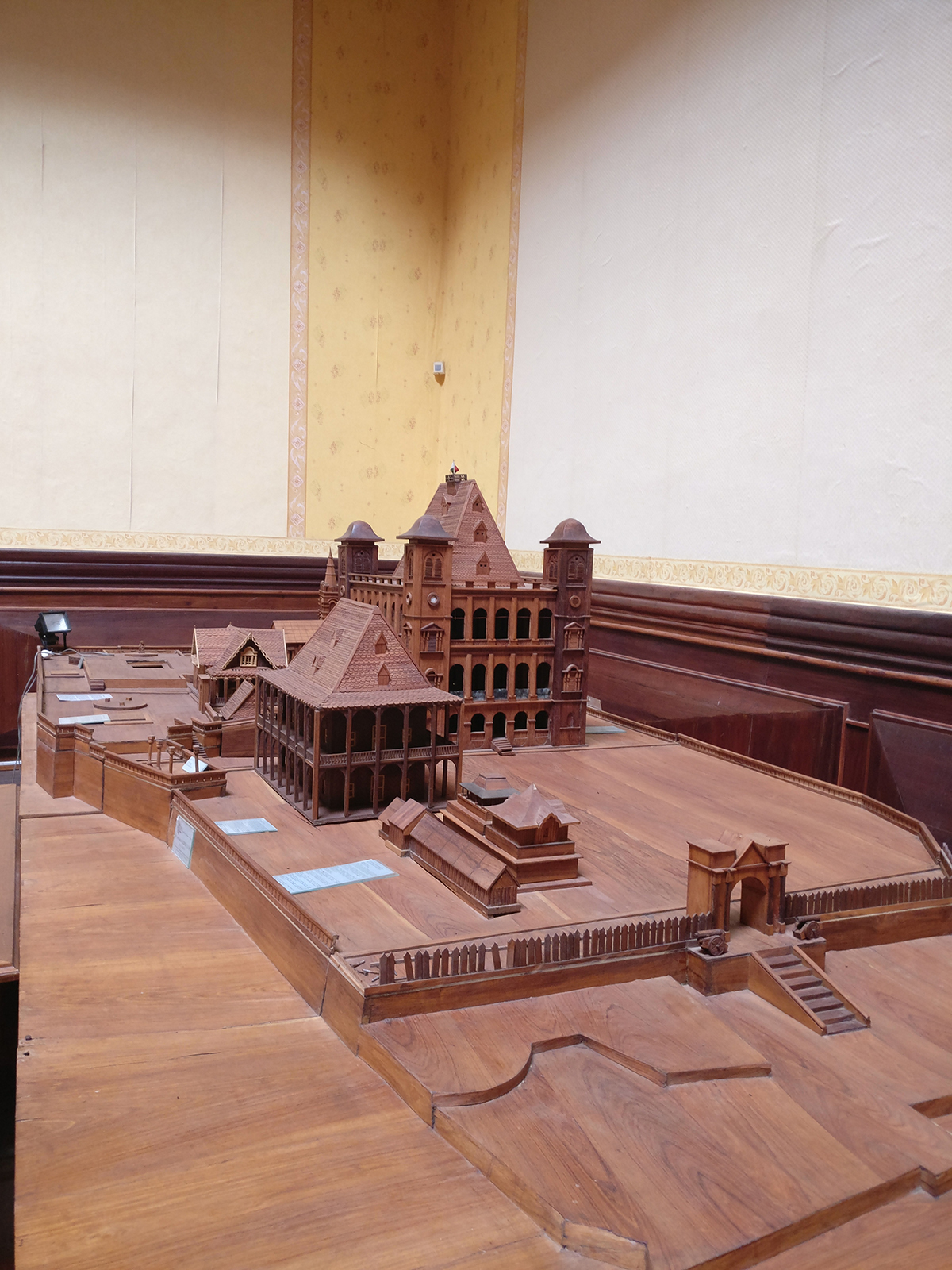
The entire Rova complex used to be built of wood. It would have looked very similar to this replica model. 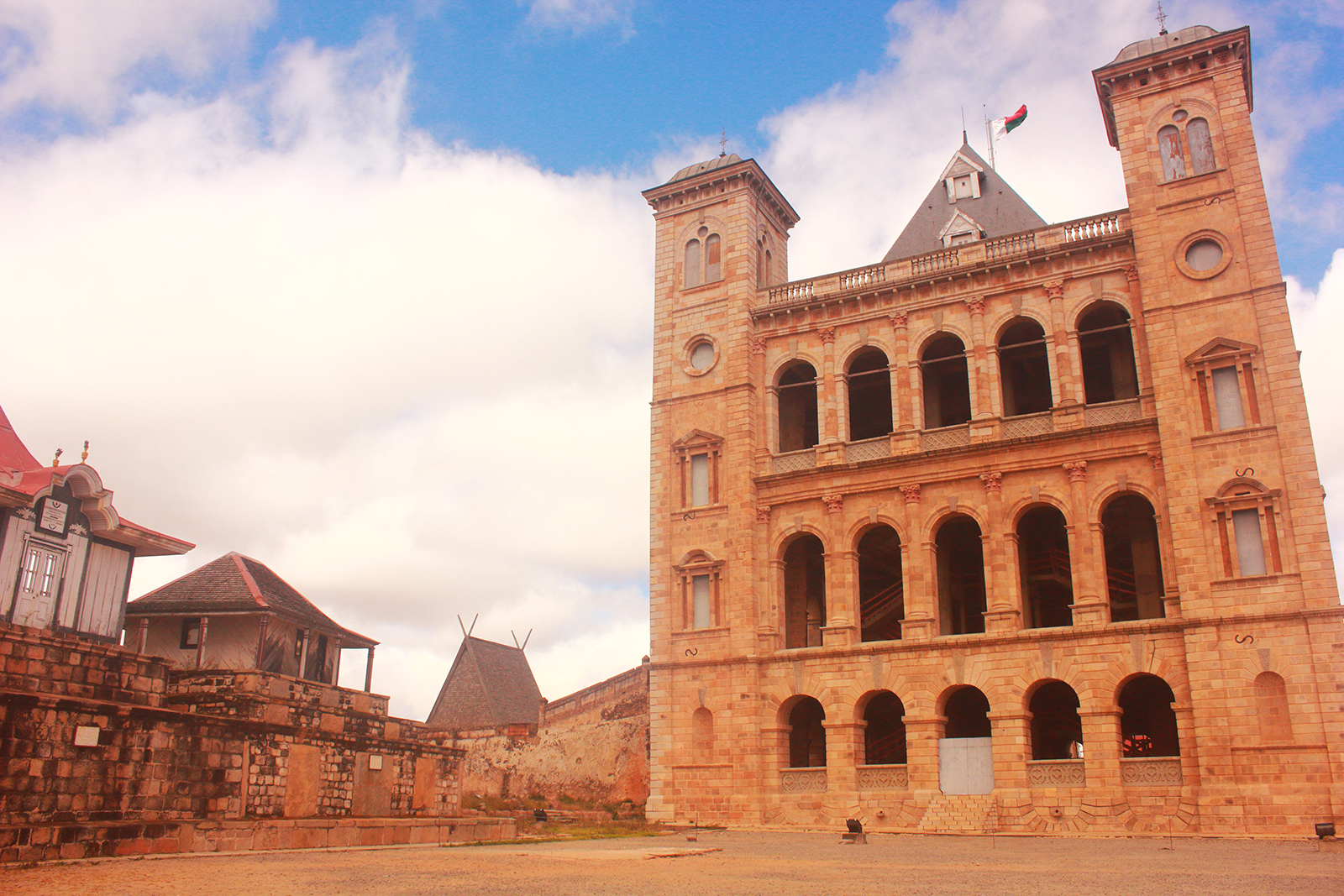
The stone encased castle was reconstructed after the 1995 fire. Stone encasing was built around 1864 during the reign of Queen Ranavalona II.
One of the taboos with regards to the tombs may also have made the Malagsy to base their architecture in wood. According to several people I spoke, only the tombs in Madagascar used to be built of stone and stones became a symbol of death. However other sources state that it was an edict by the first king of Madagascar who prohibited the use of stone as a building material. However many Malagasies that I met seem to agree with the notion that encasing the royal palace of queen Ranavalona II was considered bad luck and eventually the doom of the monarchy.